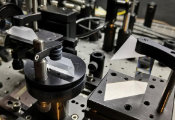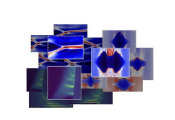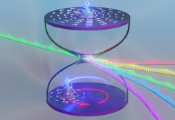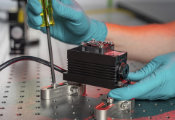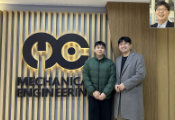Terra Quantum and Evonik Pave the Way for Advanced Hybrid Quantum Solutions in CFD
July 4, 2024 -- Terra Quantum, in collaboration with Evonik, one of the world's leading specialty chemical manufacturers, has developed HQPINN, a hybrid quantum solver that significantly outperforms classical solutions in computational fluid dynamics. This innovative approach combines classical Physics-Informed Neural Networks (PINNs) with cutting-edge quantum models in a hybrid quantum PINN (HQPINN) architecture, demonstrating a remarkable 21% improvement in accuracy compared to purely classical methods when simulating laminar fluid flow in 3D Y-shaped mixers.
Fluid dynamics simulations are crucial across various industries, from aerospace to chemical manufacturing, as they help optimize processes, improve product quality, and reduce costs. The HQPINN solver offers enhanced efficiency and precision in these simulations, potentially leading to significant time and resource savings for businesses.
HQPINN combines classical Physics-Informed Neural Networks (PINNs) with cutting-edge quantum models. PINNs are a type of artificial neural network used to solve partial differential equations central to fluid dynamics problems. By incorporating quantum computing techniques, we've created a hybrid model that significantly reduces computational costs and improves the efficiency of fluid dynamic solvers.
The HQPINN architecture combines classical fully connected layers with a parallel hybrid network, which includes a quantum depth-infused layer implemented as a variational quantum circuit. This unique structure allows for simultaneous processing of information through quantum and classical pathways, enhancing the efficiency of the learning process.
The novel solver not only demonstrates superior accuracy but also showcases the practical benefits of quantum solutions in real-world applications. For instance, Y-shaped mixers, essential in various industries such as food and beverage, pharmaceutical, chemical, and personal care, can now achieve better mixing efficiency without damaging granular and brittle ingredients. This innovation leads to shorter mixing times and more controlled processes, ultimately benefiting end-users with higher quality products and potentially reducing manufacturing costs.
One of the significant aspects of this research is the application of transfer learning. We demonstrated that the initial solutions developed using HQPINN could be adapted to solve related problems without extensive retraining. This capability enhances the model's versatility and reduces the need for computationally intensive re-simulations, making it a valuable tool for various engineering and scientific challenges.
This transfer learning capability, combined with the current and future potential of hybrid quantum solutions, positions HQPINN as a powerful and adaptable tool for industries relying on complex fluid dynamics simulations.
While the current simulations were run on the QMware server, a classical simulator of quantum hardware, the research paves the way for future implementations on actual quantum devices. As quantum hardware continues to advance, the performance and efficiency gains of hybrid quantum solutions like HQPINN are expected to grow exponentially, offering even greater benefits to industries relying on complex fluid dynamics simulations.
The development of the novel solver has set a new benchmark in the field of fluid dynamics, demonstrating the power of hybrid quantum solutions. As these technologies continue to evolve, their impact across various industries will undoubtedly grow, offering new possibilities and efficiencies that were previously unattainable with classical methods.
Markus Pflitsch, founder and CEO of Terra Quantum, commented on the achievement: "Our work with Evonik shows that hybrid quantum solutions are providing value now over classical solutions and should be considered for implementation across relevant industries. We believe this is just the beginning of a new era in computational fluid dynamics and other complex simulation challenges."


